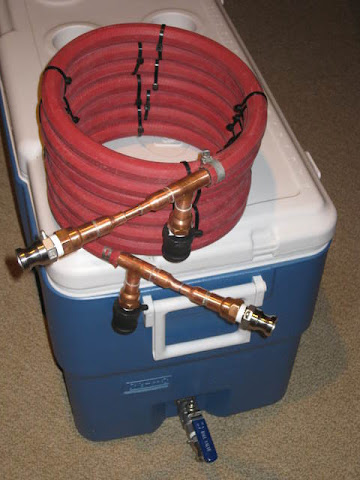Spinrathen
Well-Known Member
- Joined
- Jan 27, 2013
- Messages
- 145
- Reaction score
- 5
This thread has been very informative, thank you all for your contributions. I have recently moved to 5 gallon all grain after building a mash tun. I've been cooling thus far primitively with a big plastic tub and ice water. I'm over that situation. So on to my questions!
I've looked at a lot of builds and only seen 1 so far that has bare copper wire wrapped around the wort tube creating turbulent flow. Why don't more people do this? Does it make getting the wort tube in the water hose? Does it restrict the amount of water going through the chiller? If so has anyone tried remedying this situation by using a bigger hose? There has to be a reason why everyone doesn't do this. I would appreciate anyone with any experience to shed some light on this for me.
Thanks again!
I've looked at a lot of builds and only seen 1 so far that has bare copper wire wrapped around the wort tube creating turbulent flow. Why don't more people do this? Does it make getting the wort tube in the water hose? Does it restrict the amount of water going through the chiller? If so has anyone tried remedying this situation by using a bigger hose? There has to be a reason why everyone doesn't do this. I would appreciate anyone with any experience to shed some light on this for me.
Thanks again!



























































![Craft A Brew - Safale BE-256 Yeast - Fermentis - Belgian Ale Dry Yeast - For Belgian & Strong Ales - Ingredients for Home Brewing - Beer Making Supplies - [3 Pack]](https://m.media-amazon.com/images/I/51bcKEwQmWL._SL500_.jpg)









